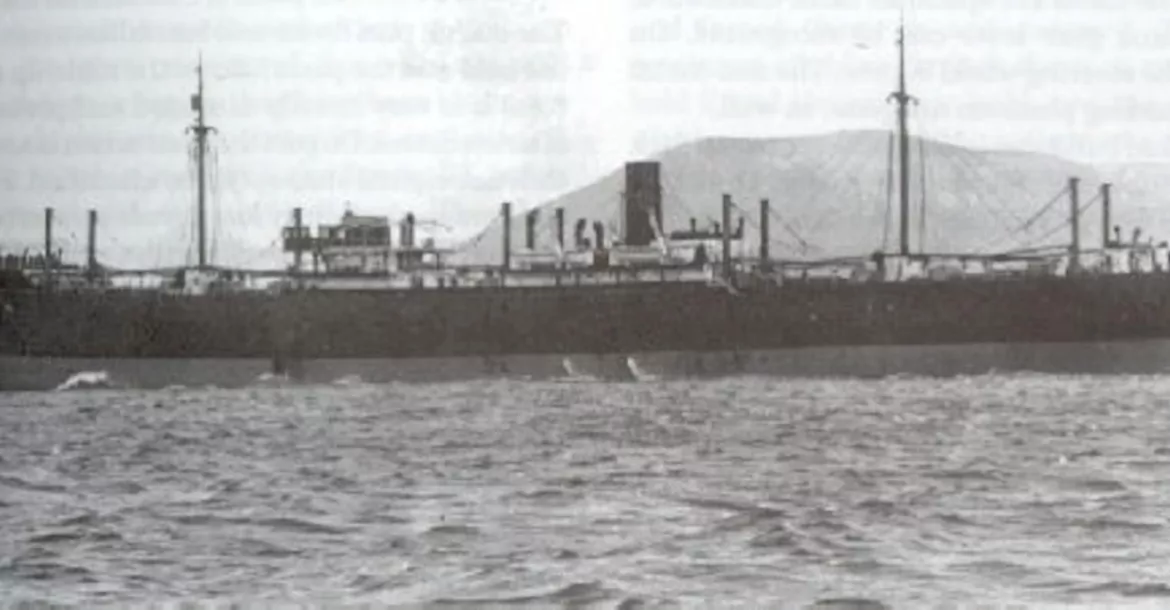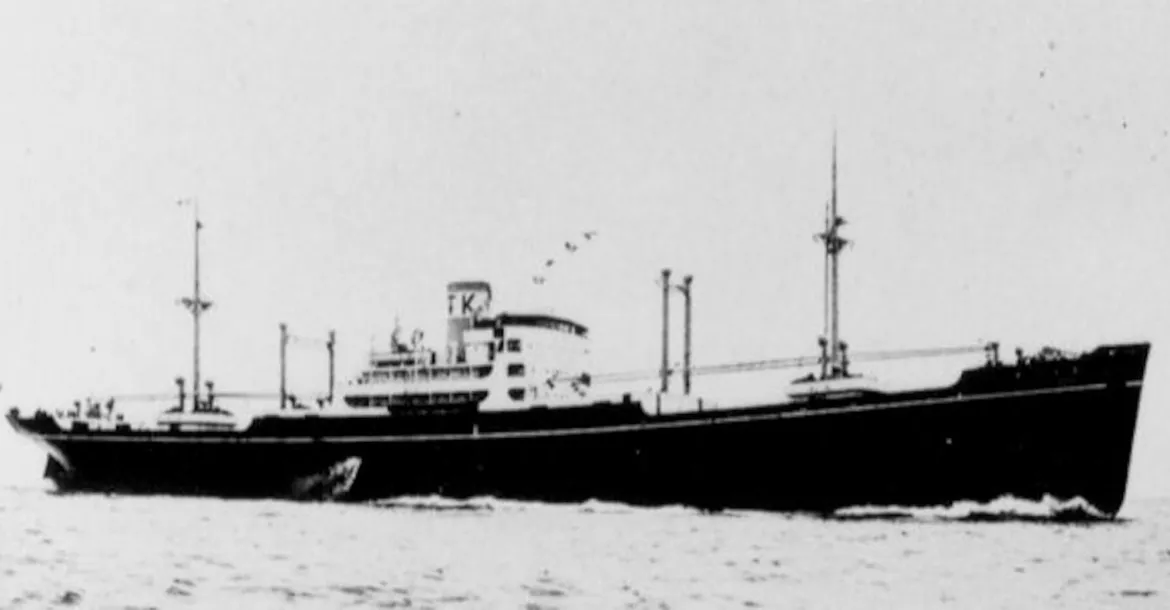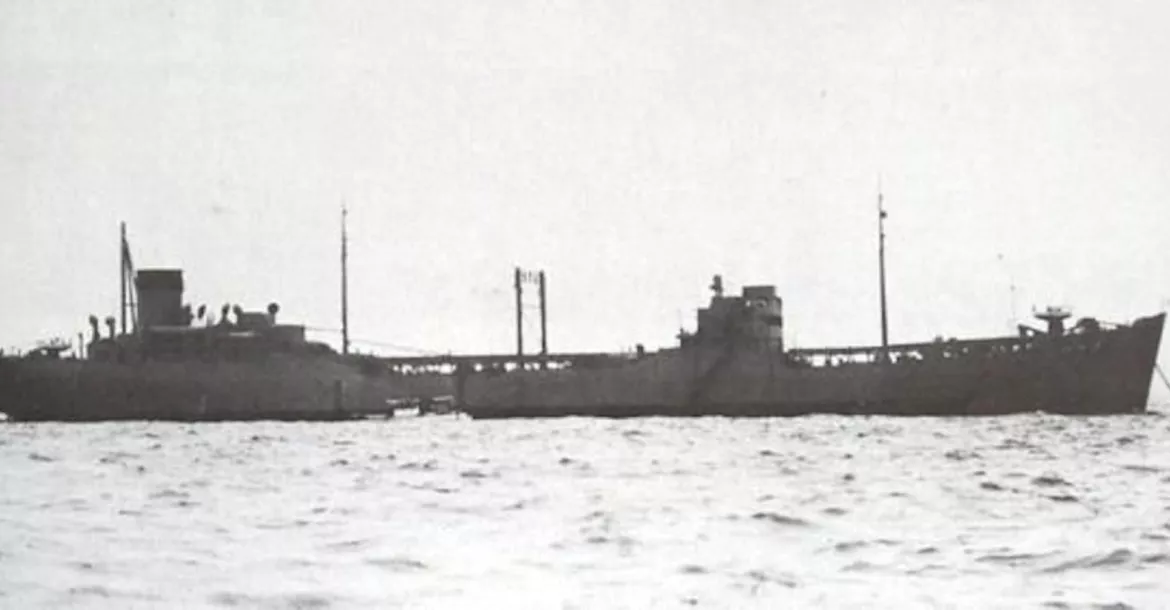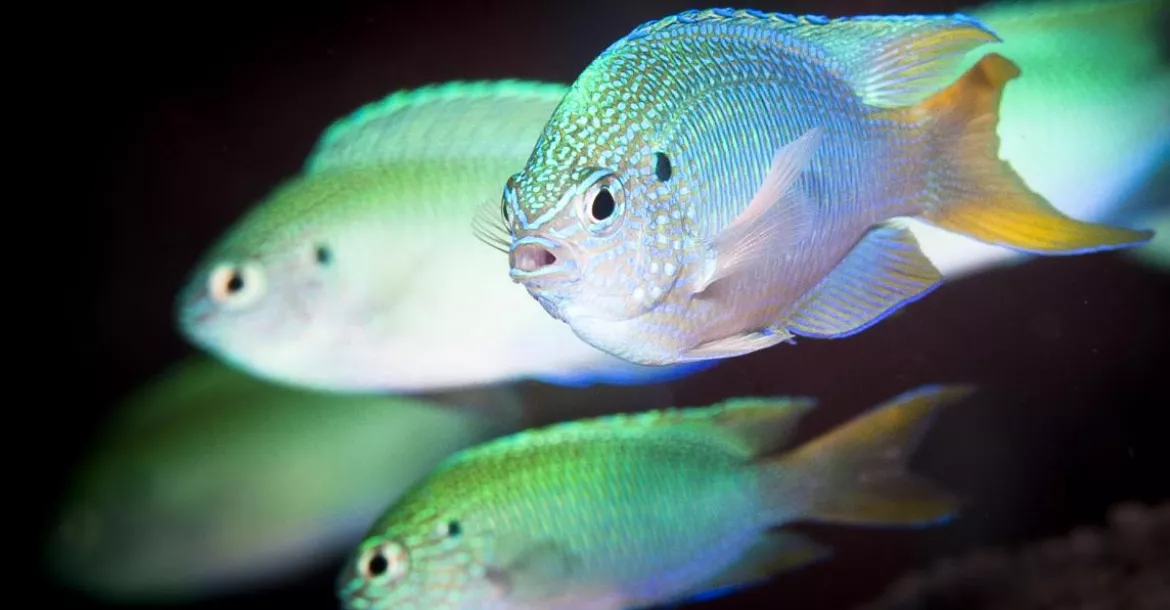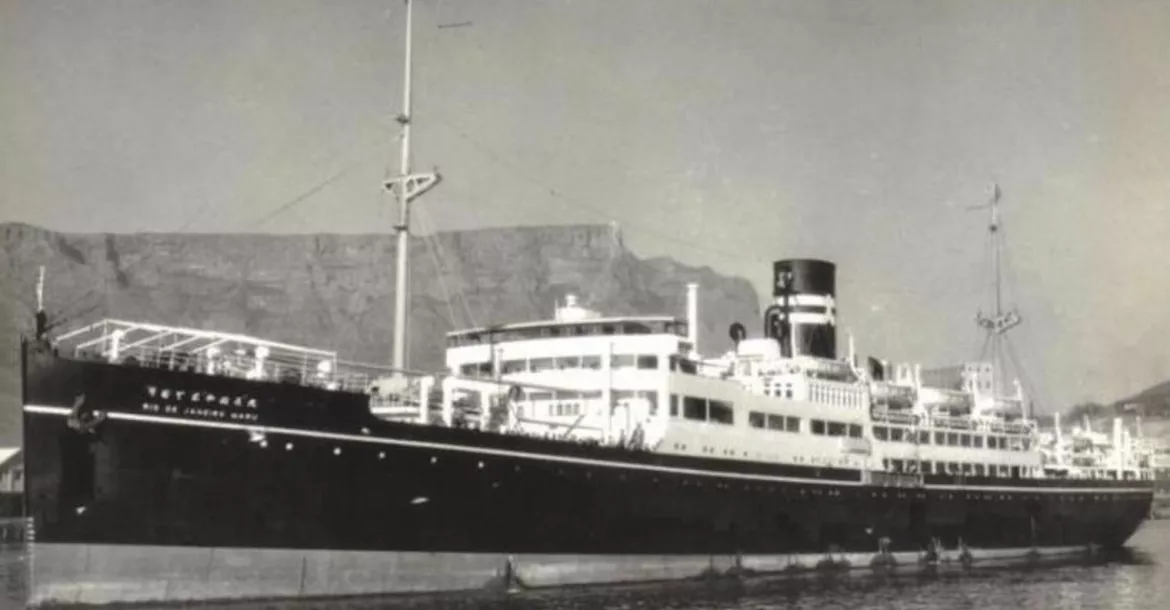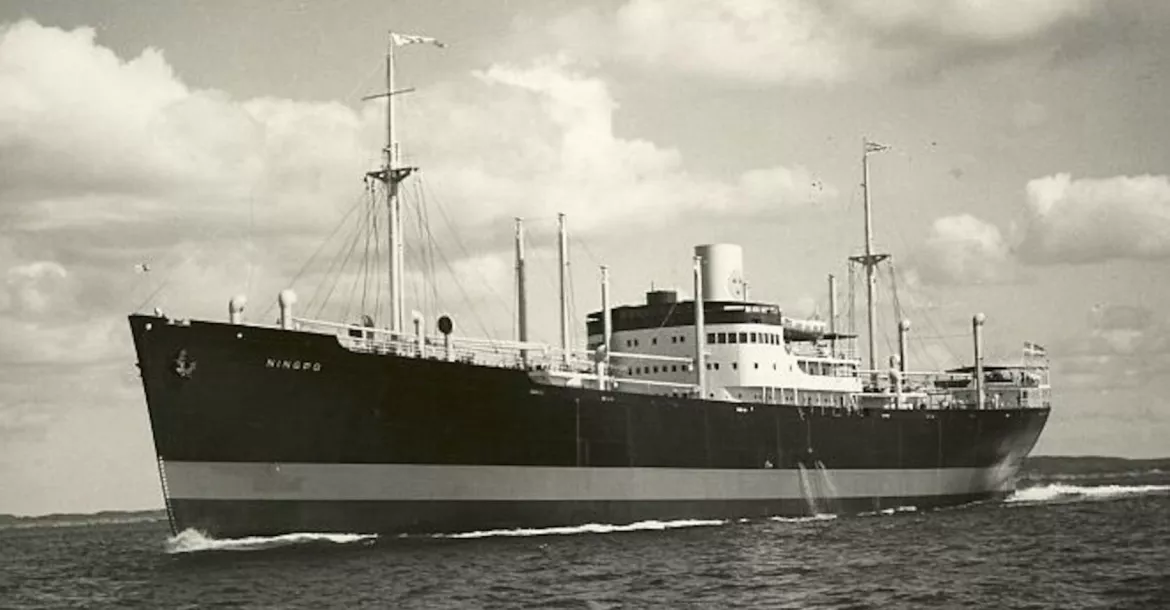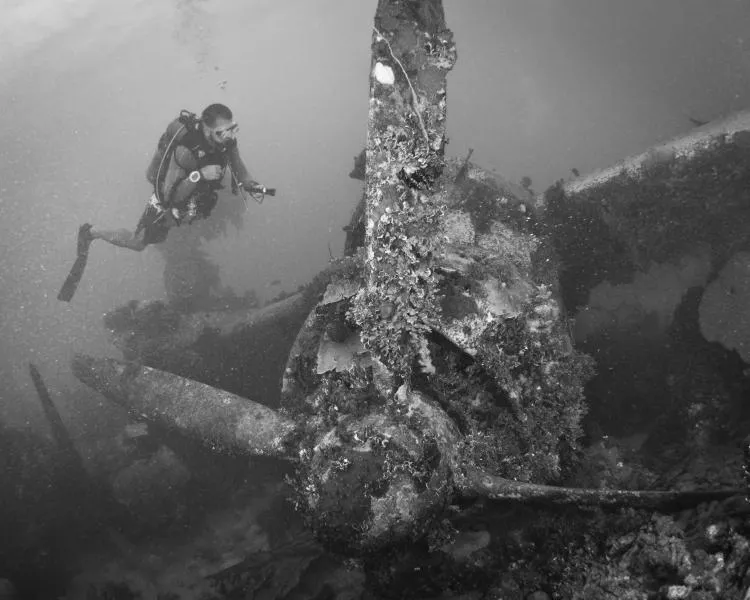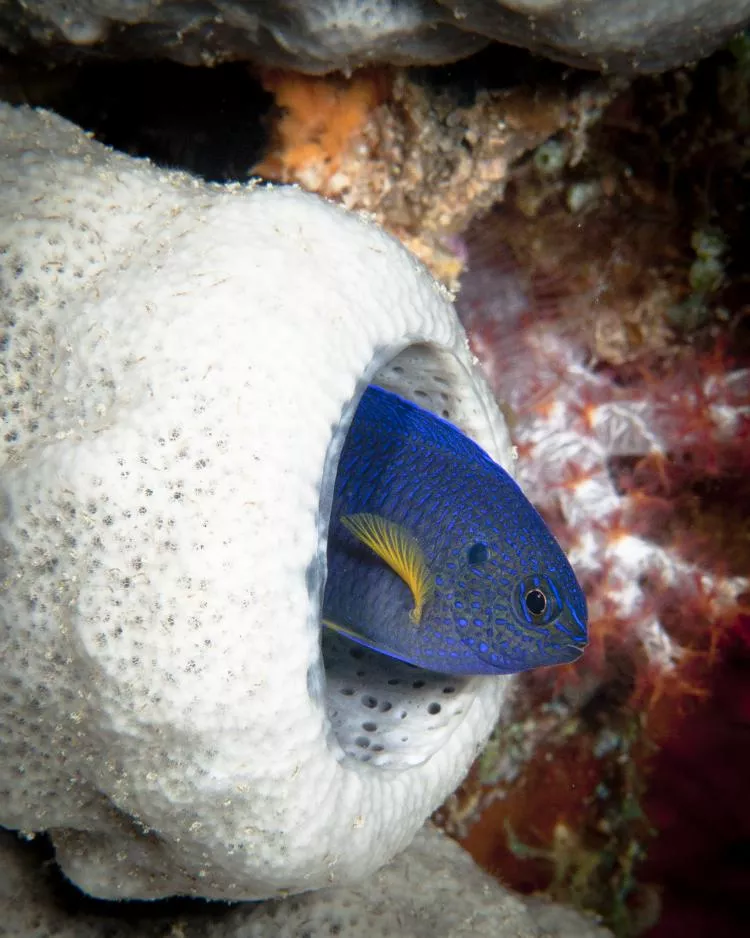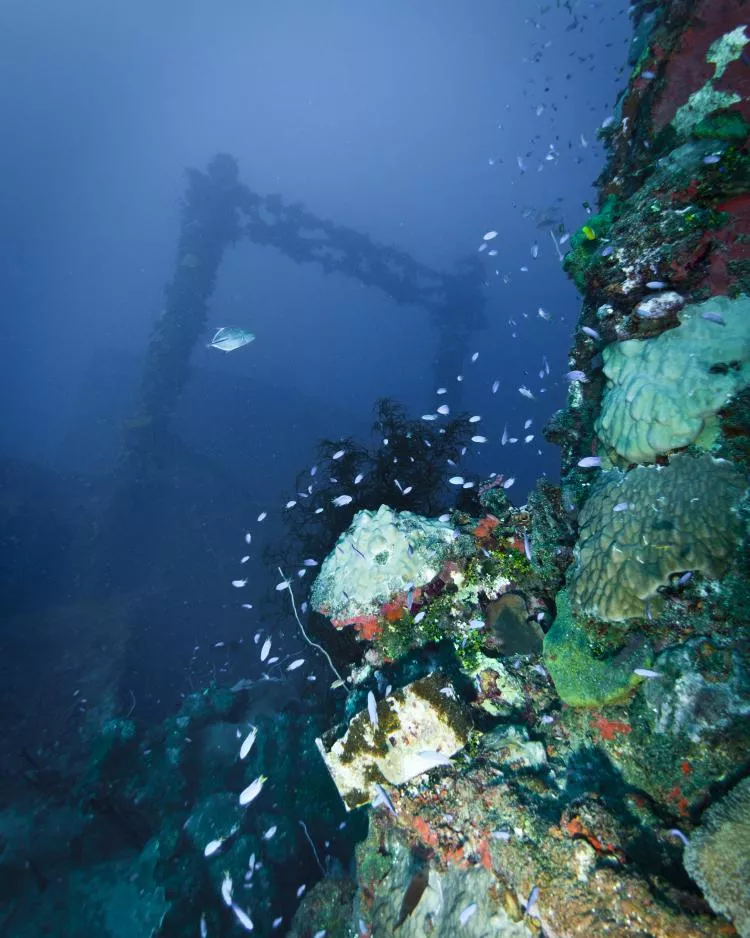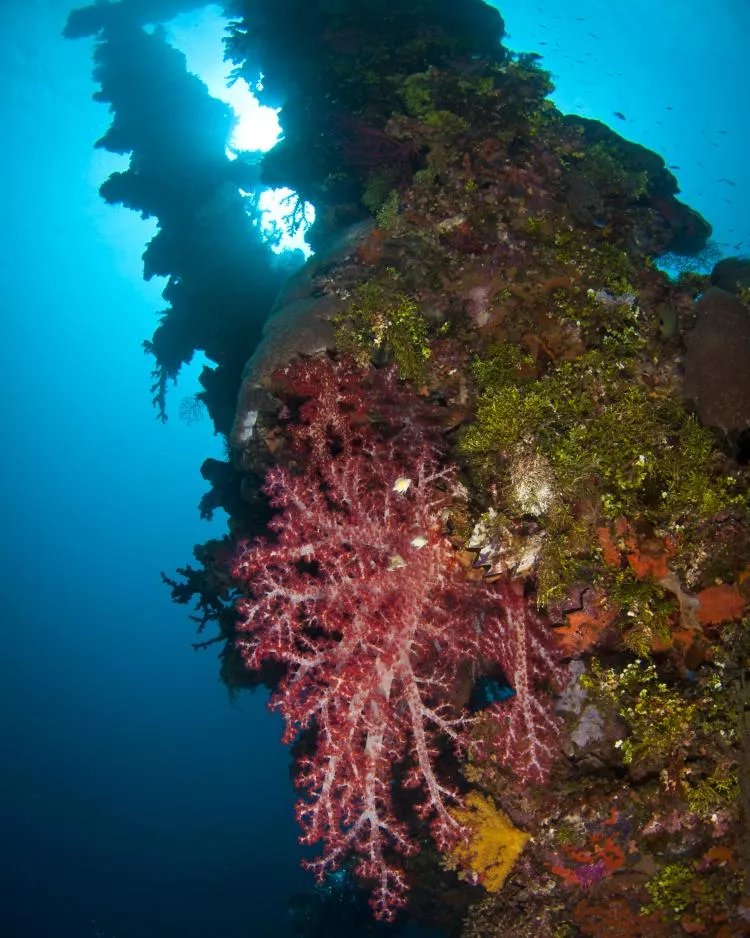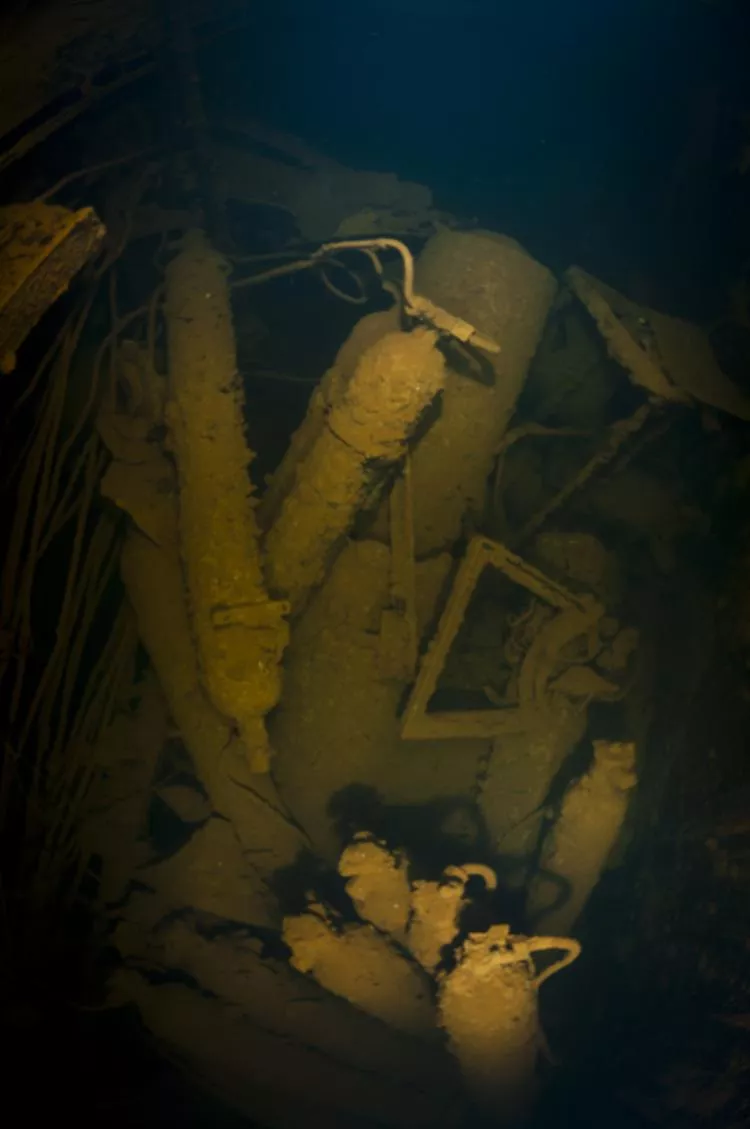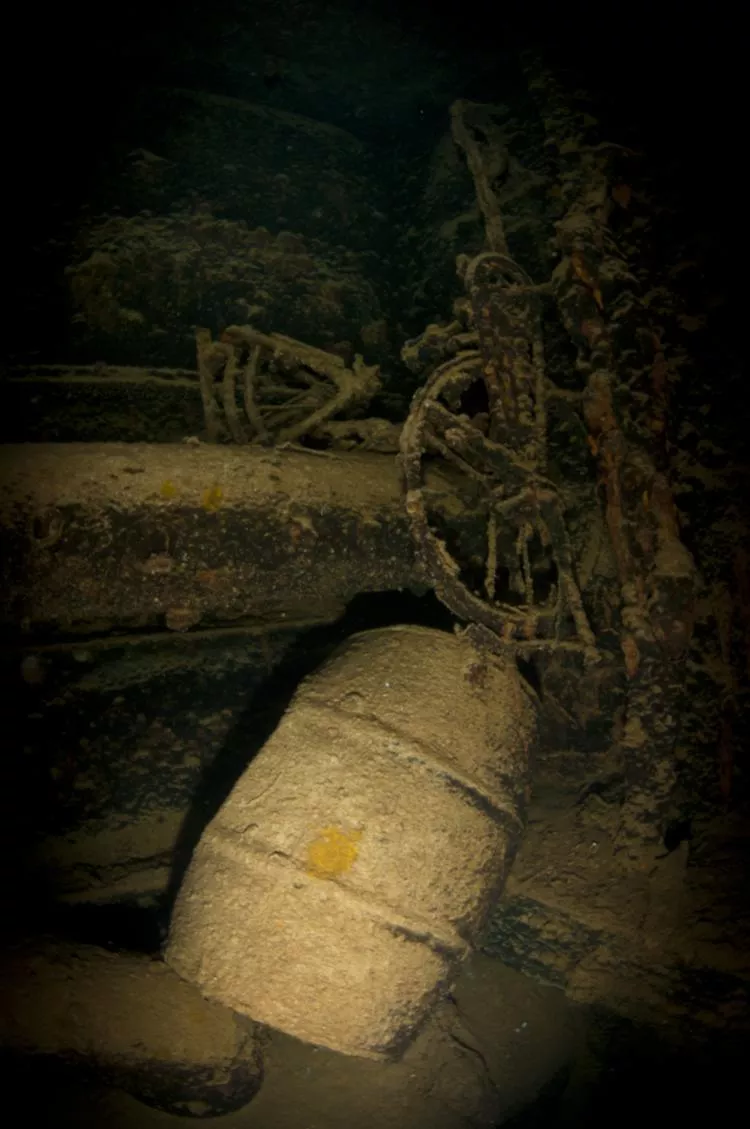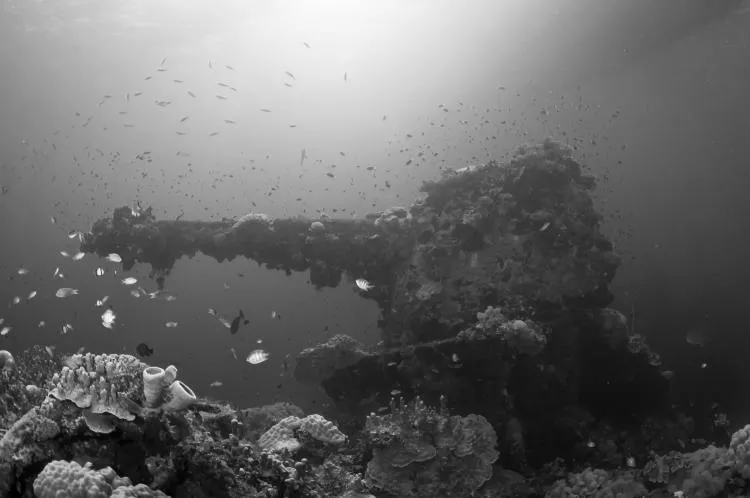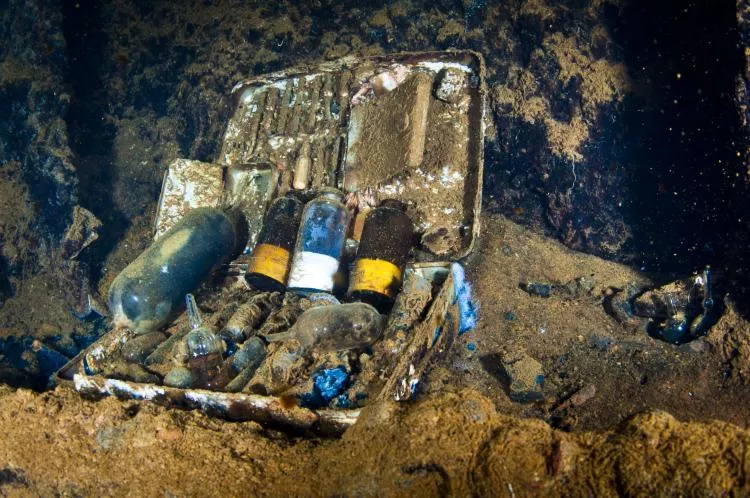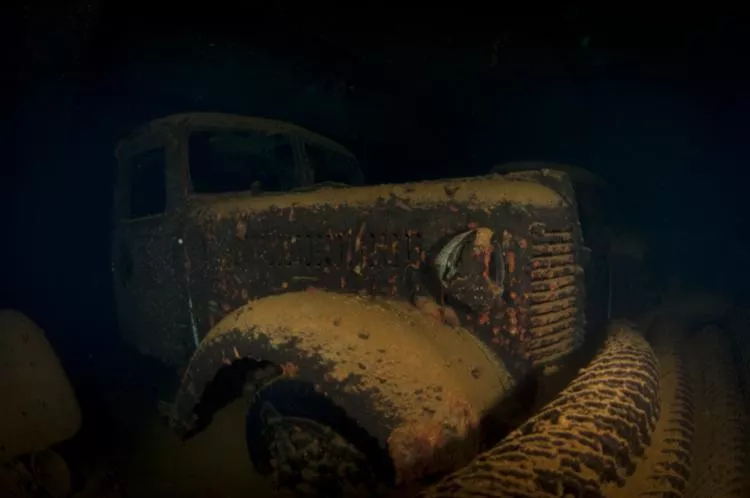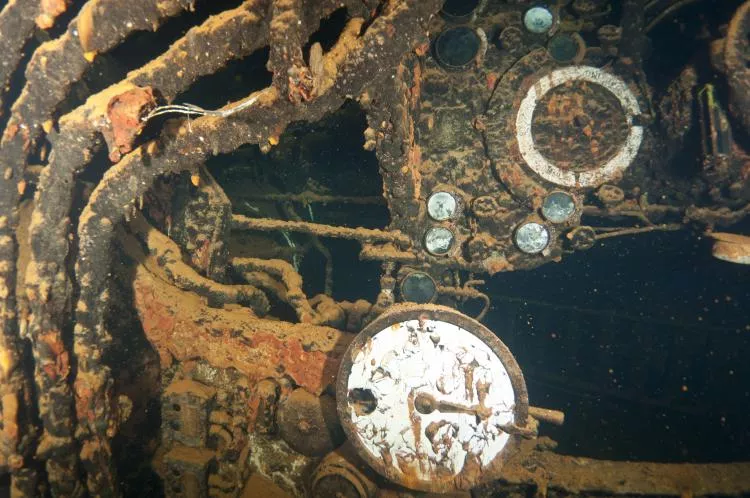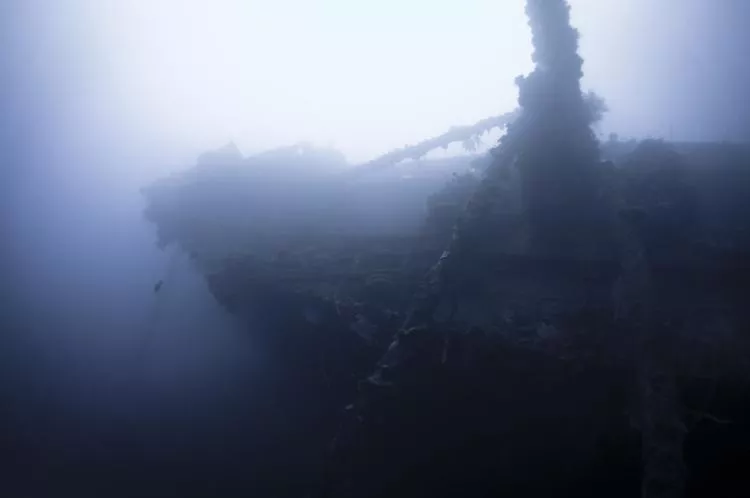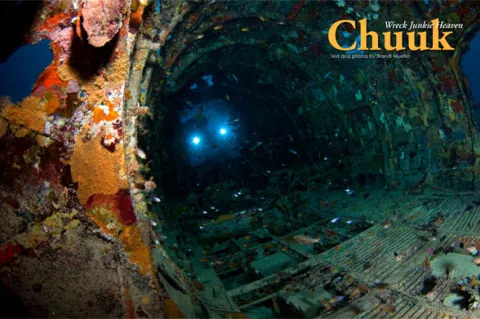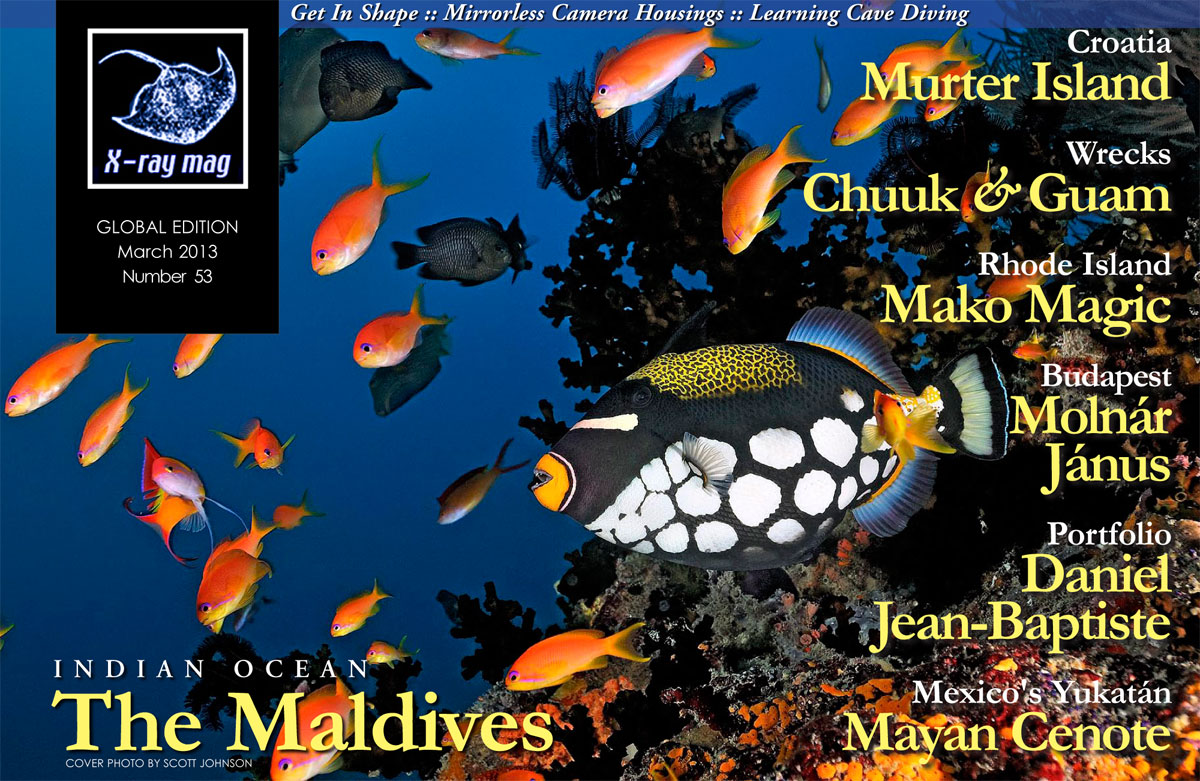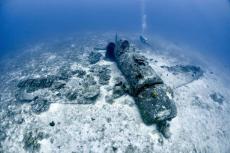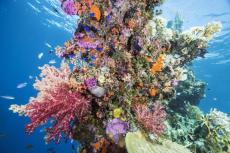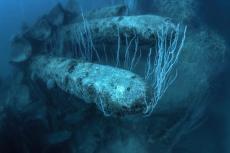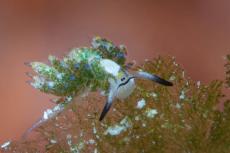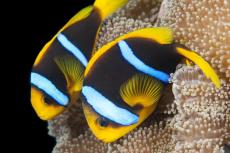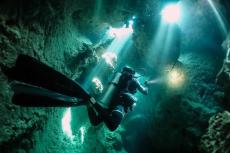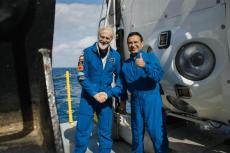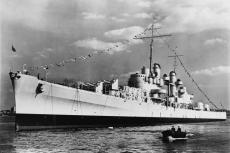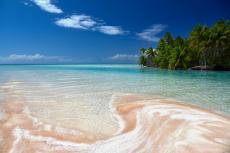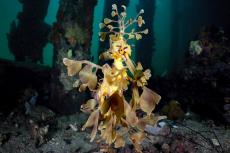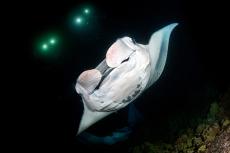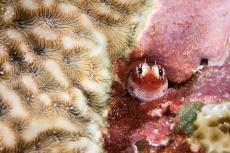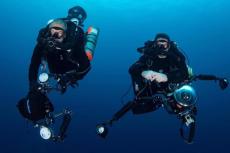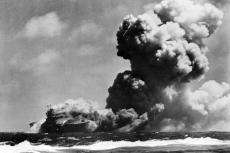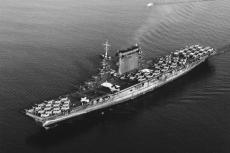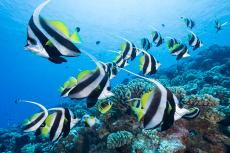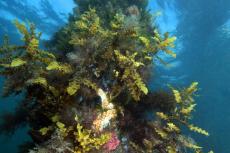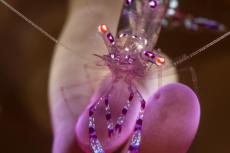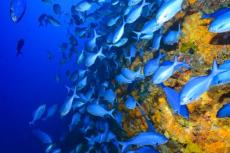My dream history lesson includes a tropical Pacific island where I step off a beautiful boat soaked in sunshine the warm Micronesian waters and descend on a coral covered ship that was part of World War II. This dream and these ships came to life for me during a recent trip aboard the MV Odyssey liveaboard. Truk Lagoon, now known as Chuuk, is most certainly one of the world’s greatest wreck diving destinations. These lush green islands with palm trees and calm blue waters make it almost impossible to fathom the immense battle that took place on the 17th and 18th of February, 1944.
Contributed by
Factfile
Brandi Mueller is a PADI IDC Staff Instructor and boat captain living in the Marshall Islands. When she’s not teaching scuba or driving boats, she’s most happy traveling and being underwater with a camera. For more information, visit: www.brandiunderwater.com.
Under Japanese occupation during World War II, Truk served as one of the Japanese Imperial Navy’s main bases in the South Pacific Theater. Some compared it as Japan’s Pearl Harbor. This logistical and operations base for the Japanese Combine Fleet served as the stage for the United States’ attack called Operation Hailstone.
Known in Japan as Torakku-tō Kūshū (the airstrike on Truk Island), the United States took Japan by almost complete surprise with two days of daytime and nighttime airstrikes, surface ship actions, and submarine attacks. Ordered by Admiral Raymond Spruance, Vice Admiral Marc A Mitscher’s Task Force 58 included five fleet carriers (the USS Enterprise, USS Yorktown, USS Essex, USS Intrepid, and the USS Bunker Hill) and four light carriers embarking more than 500 planes. There were also seven battleships, numerous cruisers, destroyers, submarines and other support ships assisting the carriers.
Airstrikes, employed fighters, dive bombers and torpedo air-craft were used in the attacks focusing on airfields, aircraft, shore installations, and ships around the Truk anchorage throughout the day and night. Many airplanes were destroyed as they were unable to take off, having just been delivered off cargo ships and still being disassembled.
Although still a major success for the Americans, just a week before Operation Hailstone, much of the Japanese fleet’s larger warships were sent to sea to be relocated out of Truk. This was probably due to the base becoming too vulnerable. But even with those ships gone, the Americans sank 12 Japanese warships, 32 merchant ships, and destroyed 249 aircraft. Many of the ships were loaded with supplies to be delivered to other parts of the Pacific and little of the cargo was recovered, thereby hindering the Japanese Navy in the Central and South Pacific and ending Truk as a threat to Allied operations in the Central Pacific.
Many ships sank and many lives were lost, but the ships of Truk Lagoon now serve a new purpose under-water. Reborn as artificial reefs, the wrecks have become covered with marine life and become home to schools of fish, anemones, corals, sharks and much more.
The wrecks of Truk Lagoon had been on my ‘must dive’ list for years, but Chuuk is a long way away from almost every-where. Serviced only by United airlines, a stop in Honolulu or Guam is required to get to Truk. My flights included eight hours to Honolulu, eight more to Guam, and a thankfully short two-hour flight to Chuuk.
Arriving very late, and very tired, I was greeted at the airport by several pleasant crew from the Odyssey who took us to the boat. Much too excited to sleep, I laid awake in my cabin waiting for morning and our first wreck.
Diving the wrecks
Finally, morning came. Breakfast was served and Captain Nelson gave us the dive deck briefing. He touched on several important topics concerning diving these wrecks, the first being that these wrecks were not sunk on purpose. Unlike many wrecks sunk artificially, which are cleaned and made safer for divers, these are actual sunken warships with potential hazards requiring divers to be aware at all times of what they’re doing, especially inside the wrecks. Visibility inside the wrecks can go from great to zero quickly from bubbles knocking off rust from overhead environments and stray fins can kick up silt leading to low visibility situations. These ships, having been underwater for almost 70 years, are beginning to show their age. For example, one of the Lagoon’s most famous wrecks, the Fujikawa Maru, known for its spectacular engine room penetration, has had most of its super structure collapse in the past year, making it dangerous to access its famous engine room.
Before diving each wreck, the Odyssey’s knowledgeable staff gives a thorough briefing about each wreck showing a dive map to recommend dive plans, points of interest as well as hazards. They also give incredible history about each wreck, discussing each ship’s role before and during the war.
Kiyosumi Maru. Stepping off the Odyessy and descending upon our first wreck, the Kiyosumi Maru, feels like entering another world. The intact ship body, sitting 12m (40ft) below the warm Micronesian waters starts to bring to life the battle that took place here.
In Japanese, maru means circle, or round. This name is given to ships that circle back to where they came from. The warships did not have that distinction, as they were sent into battle, not expected to return.
The Kiyosumi Maru was a 137m (450ft) long and 18m (6ft) wide freighter that also carried passengers launched in 1934 and converted into an armed merchant raider in 1941. She participated in the Battle of Midway and had been towed to Truk for repairs after being damaged by aircraft bombs. Sunk on her port side, laying in the sand at 31m (100ft), we swam the length of the ship and eventually entered hold #2 through the hole caused by the bomb that sank the ship. Covered in growth, particularly long branched bushes of black coral, jellyfish seemed to be strategically placed around the outside of the ship, as if they guarded it. Originally holding eight guns, all have been removed, but the platforms remain. Our dive guide led us into hold #5 to see parts of two bikes and then hold #6 to see two massive spare propeller blades. Collections of bottles found inside the ship have been gathered in sever-al places on the outside for divers to see. We also came upon a gas mask that almost looks like you could put it on and use it today.
Yamagiri Maru. The Yamagiri Maru was a 133m (437ft) passenger/cargo carrier launched in 1939 and converted to a military trans-port ship in 1941. This ship was damaged by two torpedoes in 1943 from the submarine USS Drum and repaired in Rabaul before sailing to Truk and then sank by dive bombers from the Yorktown and Bunker Hill.
Sitting at 36m (120ft) with its shallowest parts around 18m (60ft), this ship’s most interesting feature is in hold #5. On their way to be delivered to the battleships Yamato and Mushashi were armor-piercing shells 45cm (18in) long, weighing over 3,000 pounds each, which could be hurled 38km. These gun rounds were for the largest guns ever made for a battleship; the largest American battleships had only 40cm (16in) guns.
Being a lover of macro ocean life, I couldn’t help but be amazed at all the little creatures that could be found making their homes in these sunken ships. One second the dive guide would be pointing out 45cm ammunition and the next moment I would find a nudibranch crawling its way up across the bow of the WWII wreck. Anemones seem to have happily made their homes all over the wrecks, and their respective anemone fish eagerly come up to look at you, looking back at them.
Fujikawa Maru. The Fujikawa Maru is one of the lagoon’s most famous wrecks. Covered in lush coral, this ship was built in 1938 as a passenger cargo ship that carried raw silk and cotton between South America and India. Commissioned into the Japanese Navy in 1940 and outfitted with 15cm (6in) guns on her bow and stern, she was tasked for transportation, including the delivery of aircraft and aircraft parts to Pacific islands.
Carrying planes to Truk, the Fujikwawa Maru off-loaded 30 B5N2 bombers (Jill planes) which lay in pieces on Eten Airfield (Eten Island) during Operation Hailstone. They were unable to help defend against the Americans. Bombed by air attacks on February 17, the Fujikawa was still afloat on February 18. Essex dive bombers hit the port quarter with a 1,000-pound bomb. Finally, two Monterey airplanes attacked and witnessed a huge explosion and the ship in flames.
Still aboard the ship during the attack were three Zero fighter planes in cargo hold #2 and a fourth plane that is possibly an A6M “Claude” fighter, the only known surviving plane of that type. The Fujikawa sits upright, and we followed our dive guide from the surface down into cargo hold #2 to see these mostly intact planes. In the clear water, the planes looked as if a pilot could sit in them today and fly right out of the ocean and back into the air. We also saw spare wings and fuel drums.
Often boasted as one of the most beautiful wrecks in the lagoon, this magnificent ship is covered in pink and white soft coral, blue sponges, and every inch of it is covered in differently-colored marine life. On the deck, a plaque dedicates the preservation and respect of the Fujikawa and other wrecks in the lagoon. Collections of artifacts from the inside are gathered on different parts of the ship including china with Japanese brandings. Schools of tuna and smaller fish circled the wreck, and a large barracuda seemed to be standing guard over the bow gun.
Often considered one of the best wreck penetrations, much of the superstructure of the Fujikawa Maru has collapsed recently, making it very difficult and potentially dangerous to enter the engine room due to its instability.
Fumitsuki Destroyer. The Fumitsuki is a dedicated warship built for the Japanese Navy, and has no “maru” following its name. One of only two made-for-war ships sunk in Chuuk, it is a 97m (320ft) Mutuki Class destroyer built in 1926 and was in Truk for repairs from an attack by U.S. planes near Rabaul on 4 January 1944. Prior to the Rabaul dam-ages, the Fumizuki helped relieve Japanese forces in the battle of Guadalcanal as part of the “Tokyo Express”. Damaged by bombing during Operation Hailstone, her crew abandoned her when she lost power. They attempted to tow her to a new anchorage, but had not noticed the ship had its anchor dropped to avoid drifting on the reef.
Sitting between 24-36m (80-120ft) this warship still has intact bow and stern guns and a torpedo launcher. Being built as a warship and not a more comfortable passenger ship, we could immediately tell how much more compact the spaces were on the ship. We swam through companionways and looked into crew spaces, which were noticeably smaller and reduced in size compared to the passenger ships.
Airplanes. Some of the more popular airplane wreck dives in the Lagoon include the Kawanishi H8K1 “Emily” flying boat and the Mitsubishi G4M “Betty” bomber. Bomber aircraft were often given female names, and fighter aircraft were often nicknamed with men’s names.
The Emily flying boat was known for its long range. Nicknamed the “Flying Porcupine”, it was very difficult to shoot down because it had self-sealing fuel tanks and internal fire extinguishers. It held a crew of 16, had a 37m (124ft) wingspan and was 28m (92ft) long. It had four 1850 horsepower Mitsubishi Kasei engines.
This particular plane was bringing back the commanding officer of the Fourth Fleet, his chief of staff and other senior Japanese naval officers from a meeting in Palau. U.S. fighters repeatedly attacked, and the pilot still man-aged to escape the fighters and return to Truk. Although, while trying to land the damaged air-craft, the pilot lost control, and it crashed and sank. The pilot, admiral and chief of staff survived.
An easy wreck to dive at 15m (50ft), much of the plane was intact including several propellers. Near the plane sat several gauge panels and other air-plane parts.
The Betty bomber was a small twin engine plane. The wreck sat in the sand at a depth of 15-18m (50-60ft). Made to be as light as possible, the fuel tanks were unprotected and easily caught fire, making them very vulnerable.
This plane crashed while try-ing to land on Eten Island. It is unknown if it was shot down or crashed on its own. The engines are found at about 90m (300ft) in front of the rest of the wreck closer to the island. The plane could hold a crew of seven, had a wingspan of 25m (85ft), was 20m (66ft) long and had four 12.7mm machine guns, one 20mm cannon and one 1750lb bomb.
Shinkoku Maru. My favorite wreck in the lagoon—the Shinkoku Maru— has become a fantastically beautiful artificial reef. Pink and purple anemones can be found all over the top deck. Schools of fish, big and small, have populated the ship. Sitting between 9-40m (30-135ft), the 152m (500ft) commercial tanker was built in 1940. Before the war, it transported oil from the United States to Japan.
Its name meaning “divine country”, it was requisitioned by the Japanese Navy into a naval tanker in 1941. She participated in the attack on Pearl Harbor. Minor damage to the Shinkoku occurred on 17 August 1942 when the ship was torpedoed by the U.S. submarine Gudgeon and was repaired. Arriving to Truk only three days before the carrier strikes on 14 February 1944, it is thought she received a bomb hit amidships by Yorktown planes, but she did not sink until an unknown air group struck the ship with a torpedo attack later in the day. Planes from Bunker Hill made six torpedo drops that all missed.
Sinking upright, the masts used to be above the water line, but due to possible boat traffic hazards, they were toppled by explosives. The ship was identified by the ship’s bell, which was found with the name engraved.
With the super structure of the Fujikawa Maru collapsing, it’s my opinion that the engine room tour of the Shinkoku is probably now the best in the lagoon. My dive guide took me into the ship through the smoke stacks that start around 18m (60ft). Headed straight down to around 33m (110ft), one can exit the ship through the torpedo hole at 41m (135ft) in the bottom port stern. We came out the torpedo hole, looked up at the massive ship and went back in through the hole to tour the engine room, generator rooms and other areas inside the wreck.
Along with the fantastic penetration, this ship has prolific and abundant marine life. Schools of batfish are found along the top deck, and several sharks were seen passing the ship. With the superstructure being fairly shallow and so much marine life and abundant artifacts gathered on the deck, this wreck definitely needs several dives to see it all.
Hoki Maru. Another lagoon favorite is the Hoki Maru due to her cargo. Construction equipment and vehicles are found in hold #5 including intact trucks, tractors, a steamroller and two bulldozers. The trucks have right hand steering wheels, and the tractor looks similar to a John Deere model.
Originally named the Hauraki, this ship was a British/New Zealand cargo and passenger ship launched in 1921. Seized by the Japanese in 1942, it was renamed the Hoki Maru. She was used for special transport. Sitting around 49m (160ft) in the sand, this 137m (450ft) ship’s bow was severely damaged by two 1,000-pound bombs that hit the port side igniting fuel and causing a massive explosion and fire. The deck appeared to have been peeled back or ripped open from the rest of the ship.
Nippo Maru. Hit and sunk by three 500-pound bombs in its stern, the Nippo Maru was a 106m (350ft) transport ship mostly carrying water. Originally a passenger and cargo freighter, she was seized in 1941 by the Japanese. She now sits mostly upright with a 20 degree port list between 15 and 45m (50-150ft). The Nippo has a very noticeable wheelhouse with an intact telegraph and steering helm. Hold #4 is particularly interesting with its aluminum water containers, bottles and bike parts. On the port side bow, a small, mostly intact tank is found as well as a truck chassis.
Heian Maru. The largest wreck in the lagoon at 155m (510ft), the Heian Maru was built in 1930 as a passenger cargo ship. Recalled to Japan during a normal voyage between Hong Kong and Seattle in 1941, she was then converted to a submarine tender. Her name is found in both English and Japanese on the hull. She was named after the ancient city of Heinkyo, “The City of Peace and Tranquility”.
Sunk on her port side and sitting between 10-30m (35-100ft) of water, one of the most notable parts of the Heian Maru are Type-95, 7m (23ft) long torpedoes, which are stored upright in the forward holds. Artifacts have also been gathered from inside the ship and placed together including a fantastic medical kit with several different colored bottles.
San Francisco Maru. Although I did not dive this wreck, it deserves to be mentioned here. One of the deeper wrecks in the lagoon sitting upright from 45-63m (145-205ft), it is unique, as there is not much growth due to its depth. It is also a very interesting wreck because it has three intact Japanese Type- 95 light tanks, which were crewed by three people. These tanks sped up to 30mph and had half-inch armor. The San Francisco Maru was built in 1919 as a freighter. She became a cargo ship in WWII.
Known as the million dollar wreck because of her estimated worth of cargo, divers find many very interesting war artifacts on this ship. Hold #1 contains sea mines and detonators, hold #2 has several trucks, fuel and aerial bombs and torpedoes, and depth charges are found in the aft holds.
Rio de Janeiro Maru. Before WWII, the Rio de Janeiro Maru was an eight-deck passenger luxury liner, which carried people and cargo from Japan to many areas of the world including South America, South Africa, the United States. Built in 1940 and converted into a submarine tender in 1940 for the Japanese Navy, she serviced six submarines. After Japan lost most of its submarines, she was reclassified as a transport ship. Sunk by at least one bomb from an Essex aircraft, she now rests on her starboard side at 40m (130ft).
Another of my favorites, this 137m (450ft) wreck had an easily accessed large engine room with many knobs, gauges and pipes. There was also a hold referred to as the ‘bottle room’ with stacked boxes of beer bottles. The ship also had very large, photogenic, propellers. One needs several dives to fully explore this large, mostly shallow wreck.
Afterthoughts
With so many wrecks in Truk Lagoon, one needs multiple trips to see them all, much less explore them adequately. The MV Odyssey, a 40m (132ft) luxury liveaboard with nine very comfortable private state-rooms, a spacious dive deck, large cam-era table, and fantastic meals makes it easy to dive as many of the lagoon wrecks in a week as possible. Offering five dives a day and a fantastic and knowledgeable crew, I can’t imagine a better way to make the most of a week diving Chuuk.
I’ve often heard people talk about diving Chuuk, and they think it is too advanced for them. It can be, but it doesn’t have to be. For divers who do not want to go “deep and dark”, the outsides of the wrecks have become fantastic artificial reefs with hard and soft corals, anemones, large schools of fish, and plenty of the macro critters found in other parts of Micronesia (most of the time divers are too enthralled with the wrecks to search for them!)
Almost all the wrecks can provide a spectacular dive above 30m (100ft). And usually when the Odyssey dives the very deep wrecks, they will provide an alternative wreck for those who do not want to go that deep.
The experienced and well-trained Odyssey crew will also go above and beyond to make sure every diver on the boat gets the diving they are looking for. Dive guides can recommend easier dive plans for those wanting to stay shallower and outside the wreck.
If you do, however, want to go “deep and dark”, they will take you on mind blowing penetrations into engine rooms, cargo holds, and more. Aboard the Odyssey divers are given the opportunity to dive at their leisure or have one of several fantastic dive guides lead them. Technical diving is allowed on the Odyssey for certified or experienced tech divers.
Many lives were lost and ships sunk in the waters of Truk Lagoon. But underwater, the ships have been reborn as thriving artificial reefs. Almost 70 years in the nutrient rich waters of Micronesia have made these ships stunning and colorful marine habitats. Hard and soft corals cover the outsides of the ships and large school of tuna, barracuda and sharks swim by. The ships are also the grave sites of those who made the ultimate sacrifice—they gave their lives for their country. The wrecks provide a tangible history les-son, and nothing is more exciting than being able to visit and explore them. ■

